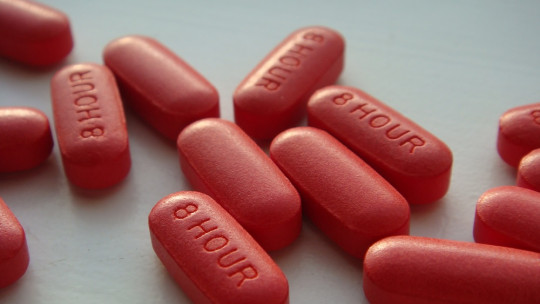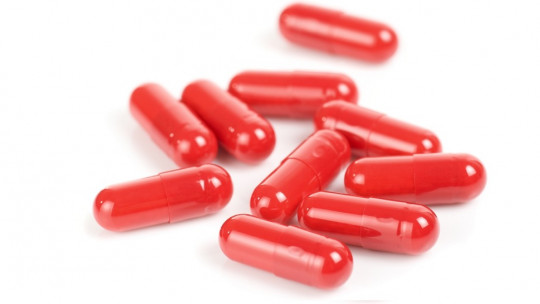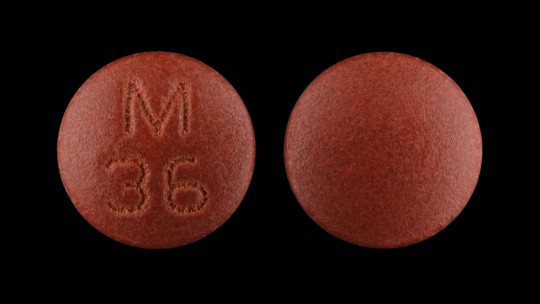Different mental health problems usually cause great suffering to those who suffer from them and/or limit their daily lives. And one of the most common in the world, and probably throughout history, is depression.
This disorder is characterized by the presence of a sad mood and difficulty feeling pleasure , in addition to generating passivity, hopelessness, feelings of guilt, difficulties sleeping, eating, concentrating, thinking and relating, and even suicidal ideations. It is therefore a condition that has serious repercussions and affects all areas of life.
Because of this, throughout history attempts have been made to generate different strategies and methods to treat depression. One of the different ways to achieve this is through pharmacology, which can help control symptoms and can serve as support while working on their causes. And there are many drugs that have been created for this purpose. One of them is amoxapine which we will talk about below.
What is amoxapine?
Amoxapine is one of the so-called antidepressant drugs, substances with psychoactive properties that have been found effective in combating the symptoms of depression because they generate an alteration in brain chemistry that increases the levels of certain neurotransmitters.
Is about one of the best known components of the group of tricyclic antidepressants which receive this name given that their chemical composition is made up of three rings of atoms and that they have an important effect at the level of norepinephrine and serotonin.
Amoxapine usually comes in a tablet presentation, to be taken orally and accompanied by water, and it has been observed that it tends to present its first effects in a shorter period of time than other tricyclics such as imipramine, and may be visible between two and six weeks after the first dose.
Although amoxapine and the rest of the tricyclics are effective drugs in the treatment of depression and in fact for a long period were the predominant antidepressants, currently have been superseded by specific serotonin reuptake inhibitors which have similar efficacy but act more specifically and tend to generate fewer side effects.
This is because amoxapine acts at a non-specific level, affecting both areas of the brain where its effects are beneficial and others where they are not. In fact, in excessive doses they can be toxic and even cause death from overdose.
Action mechanisms
The action of amoxapine on the body and its effects on improving mood are due to its mechanism of action, which is based on the inhibition of the reuptake of serotonin and norepinephrine.
This means that norepinephrine and serotonin are released into the synaptic space, blocking the process that would cause part of these neurotransmitters to be returned to the sending neuron. As a result of this we have higher levels of norepinephrine and serotonin in the brain so that we can take advantage and use a greater amount of these substances.
Likewise, it has been observed that amoxapine has dopamine antagonist activity, that is, it hinders the activity and transmission of this neurotransmitter. Although this may seem like a negative point and may in fact lead to side effects, it may also have clinical utility in some conditions.
Main indications
Amoxapine is, as we have said, an effective antidepressant, and as such one of its main indications is major depression
Although, as we have previously indicated, both this drug and the rest of the tricyclics have been superseded by specific serotonin reuptake inhibitors or SSRIs or other types of drugs with greater specificity, the truth is that they are still used when there is no response. to treatment with other drugs.
Its use may also be indicated in dysthymia or persistent depressive disorder, as well as in anxious depression or mixed anxiety-depressive disorders. It is also sometimes used in reactive depression.
In addition, it is especially indicated in patients whose depression has psychotic and It has been used in the treatment of bipolar disorder since it helps control these types of symptoms (something that dopamine antagonism can benefit).
Possible side effects
Although it is true that amoxapine is a useful drug, it is also necessary to take into account that it can present certain toxicity and can cause various types of side effects.
Among the most relevant and common side effects, it is worth highlighting drowsiness and fatigue, as well as nausea and vomiting and dry mouth Headaches, difficulties urinating or excessive urge to do so, alterations in appetite and weight (gain), anxiety reactions, hypotension, hyperhidrosis, fever, photophobia or tachycardia or motor rigidity may also appear. In some cases the presence has also been observed. of dyspareunia, or pain during intercourse.
Tardive dyskinesia may also occur. Likewise, more serious reactions may include the appearance of seizures, confusion or alterations in consciousness or breathing problems, as well as suicidal ideation. It should be noted that if treatment is discontinued, It must be done in a planned and gradual manner or withdrawal syndrome may arise
One of the most serious possible side effects is agranulocytosis. Another of them (although the least common) is neuroleptic malignant syndrome, which, although it is usually caused by antipsychotics, has also been observed in some cases with other drugs (including amoxapine). Both can have serious health repercussions and even cause death.
Contraindications
Due to these and other possible side effects, amoxapine is not a drug that can be taken freely by any type of person but must be regulated and is contraindicated for certain types of population.
Obviously one of the first groups that should avoid its consumption is all those people who have an allergy to amoxapine or any of the components with which it is made. They should also avoid its consumption those people who have recently had a heart attack or some cardiovascular problem , because it can have effects on blood pressure and heart rate (it can generate tachycardia). It is also not recommended for people with Parkinson’s disease, as it can worsen their motor problems.
People who have suffered seizures, have epilepsy or glaucoma, kidney problems or genitourinary diseases should avoid it or should evaluate with their doctor the possible appropriateness of using this drug. Pregnant women and nursing mothers should also avoid it since it has been seen to be excreted in breast milk.
Diabetics and people with thyroid problems, as well as those with kidney or liver problems, should also avoid it or have a very rigorous medical check-up. Finally, it should be taken into account that this drug should never be used in combination with an MAOI, since there is a great risk of dangerous health changes due to their interaction.
You should consult with a professional about the suitability of its use if you consume other drugs. It should also not be taken with alcohol or other psychoactive substances (especially if they are depressants, since the effects are enhanced).









